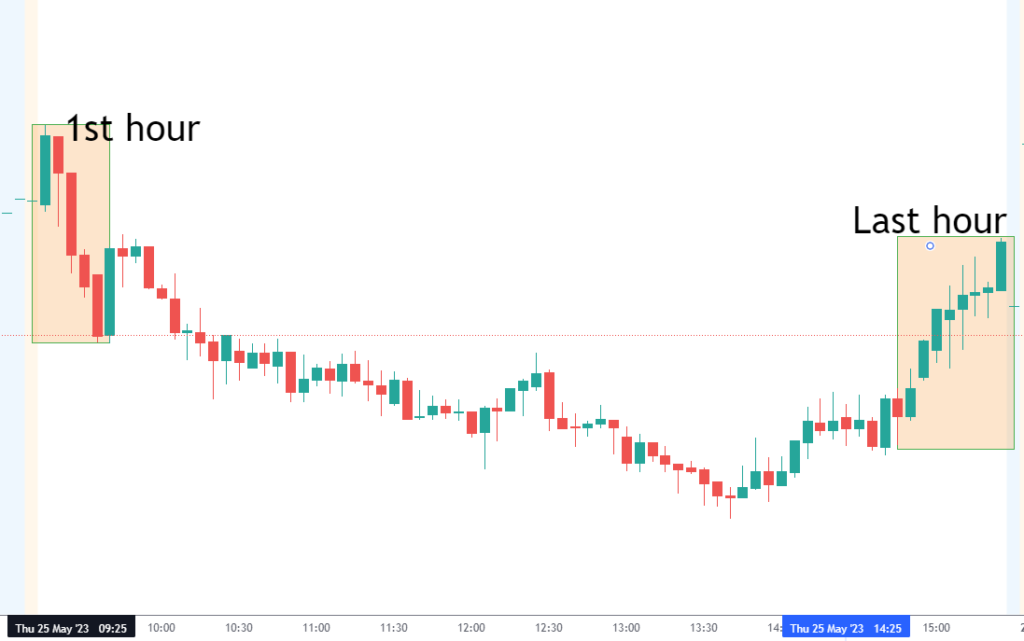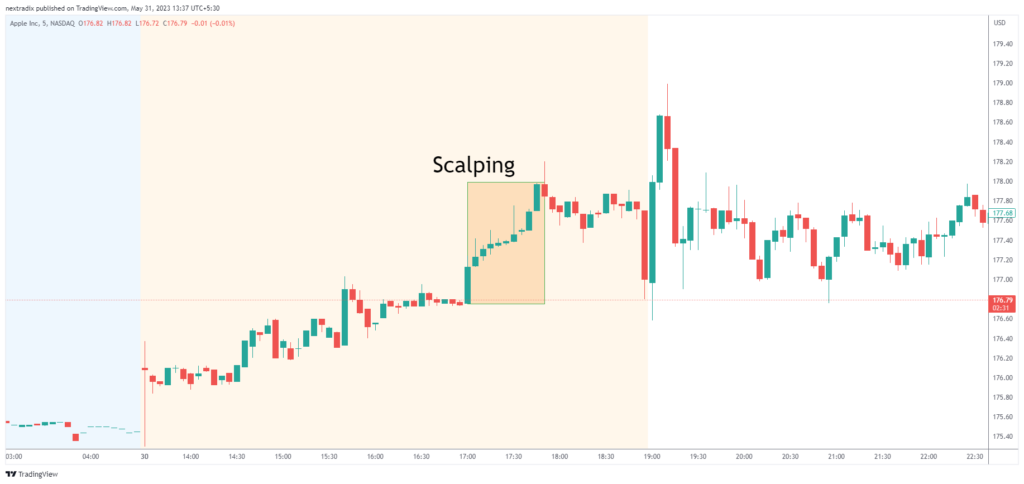Introduction
In the fast-paced world of stock market trading, traders employ a variety of profit-generating strategies to capitalize on market fluctuations. Scalping the trade is one such strategy. Due to the potential for quick profits, scalping has acquired popularity among active traders despite its reputation as a high-speed, short-term strategy.
In this article, we will examine the concept of scalping trade, its main principles, advantages, and challenges, as well as its application to the stock market.
Knowledge of Scalping Trade
Scalping trade, also known as scalp trading, is a trading strategy that seeks to profit from minute market price fluctuations. Scalpers, or traders who use this strategy, enter and exit trades quickly, typically within seconds to minutes, to capitalize on minor price differences.
Scalping significantly relies on technical analysis, making use of indicators, chart patterns, and market depth to identify short-term price fluctuations.
Key Principles of Scalping Trade
Quick Trades
Scalpers are committed to swiftly executing trades to capitalize on immediate market opportunities. This requires vigilant market observation, swift execution, and the capacity to make split-second decisions.
Low Profits and High Frequency
Scalping trade entails acquiring multiple small profits across a large number of trades. The objective is to accrue profits from multiple trades as opposed to relying on a few large wins. Scalpers strive for a high win rate, despite modest individual profits.
Strict Stop Loss
Due to the short-term nature of scalping, traders typically employ restrictive stop-loss orders to limit losses. This strategy relies heavily on risk management to protect against adverse market movements.
Advantages of Scalping Trade
Enhanced Profit Prospects
Scalping trade enables traders to capitalize on frequent price fluctuations, potentially resulting in multiple profitable trades within a brief time frame. The cumulative effect of these minor improvements can be substantial.
Reduction in Market Risk Exposure
Scalpers attempt to minimize their exposure to market risks by holding positions for fleeting periods of time. Scalpers may be less susceptible to large market swings or unanticipated news events because they focus on short-term price fluctuations.
Adaptability to Extremely Volatile Environments
Scalping can be especially advantageous in highly volatile markets, where rapid price fluctuations present opportunities for fast profits. Frequently, volatile markets exhibit increased liquidity, which facilitates the execution of rapid trades.
Take your financial future in your own hands! Sign up for MoneyMunkx today and gain access to exclusive tips, tricks, and insights into the world of finance, stocks, and cryptocurrency!
Difficulties of Scalping Trade
Transaction Expenses
Due to commissions, fees, and bid-ask spreads, frequent trading can contribute to higher transaction costs. Traders must carefully evaluate these expenses to ensure that they do not erode profits.
Time and Attention Requirements
Scalping requires intense focus and concentration. Traders must constantly monitor the market, identify trading opportunities, and promptly implement trades. It can be mentally and physically taxing and calls for a disciplined approach.
Emotional Control
Rapid trades and modest profits can generate a sense of urgency, resulting in rash decision-making. For scalpers to maintain discipline and adhere to their predefined strategies, effective emotion management is essential.
Implementing Scalping Trade on the Stock Exchange
Scalping trade is a prevalent practice in numerous financial markets, including the stock market. Stocks with high liquidity and volatility appeal to scalpers in particular. Due to their high trading volume and tight spreads, blue-chip equities and exchange-traded funds (ETFs) are frequently favored.
Scalpers use technical indicators such as moving averages, support and resistance levels, and momentum oscillators to identify short-term price fluctuations.
When should I do scalping?

On a trending day, the initial half an hour or one hour after markets open is an ideal time to scalp. As the markets will be unstable in the initial one hour, we could see large moves in either direction.
Scalpers take advantage of these fluctuations to scalp and gain huge profits.
At the same time, the last hour is crucial for traders as they tend to wind off their positions. As a result, markets become trendy and show signs of strength or weakness for the next day.
Conclusion
Scalping is a fascinating and dynamic trading strategy employed by traders seeking to profit from short-term price fluctuations in the stock market. Scalpers seek to accumulate gains from numerous trades by emphasizing quick trades, minor profits, and strict risk management.
Scalping has benefits such as increased profit potential and reduced exposure to market risks, but it also presents difficulties that must be carefully considered.
Before adopting this high-speed trading strategy, traders should thoroughly assess their risk tolerance, time commitment, and emotional control.
As with any trading strategy, it is necessary to practice and hone skills, continuously adapt to changing market conditions, and maintain a disciplined mindset in order to achieve success in scalping trade.
- AGE CALCULATOR - July 21, 2024
- PAY YOUR CAR LOAN WITHOUT INTEREST – USE THIS TRICK - July 21, 2024
- Mutual funds returns calculator - January 2, 2024
